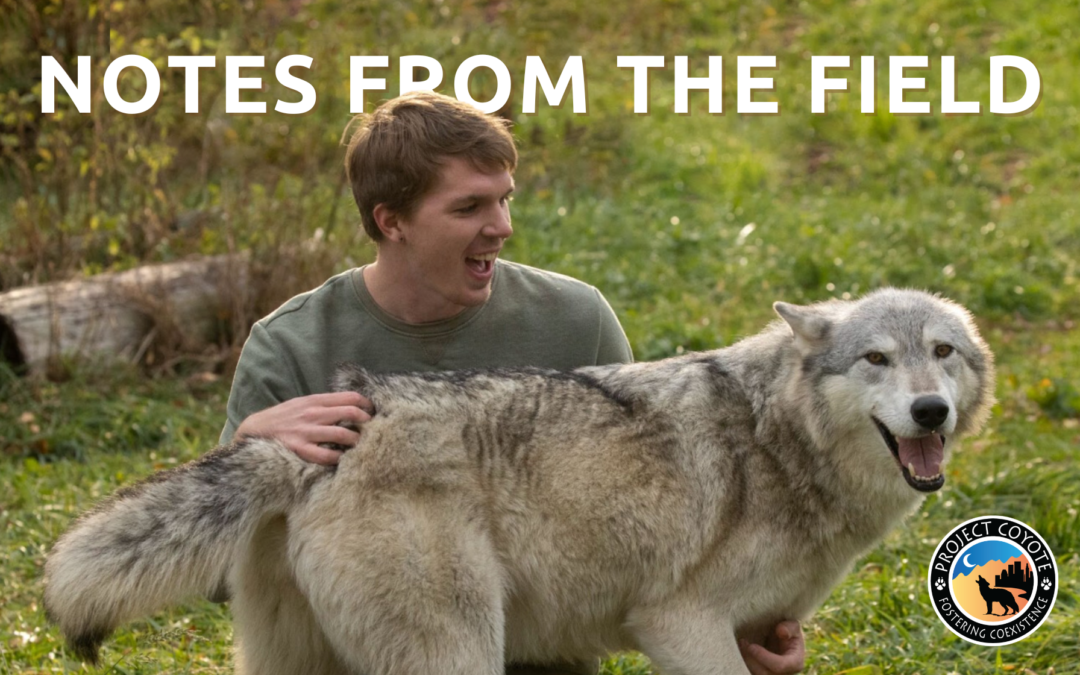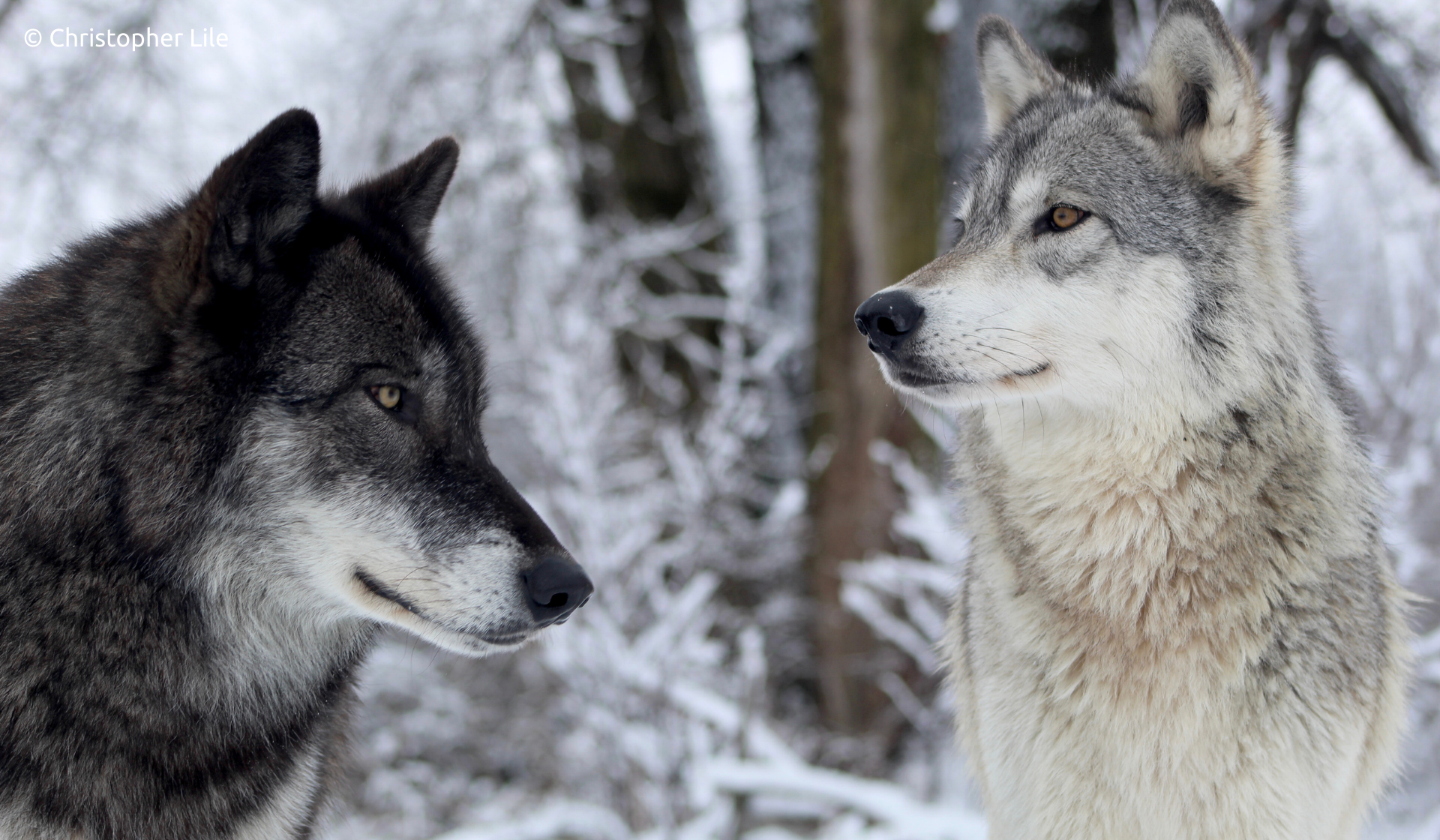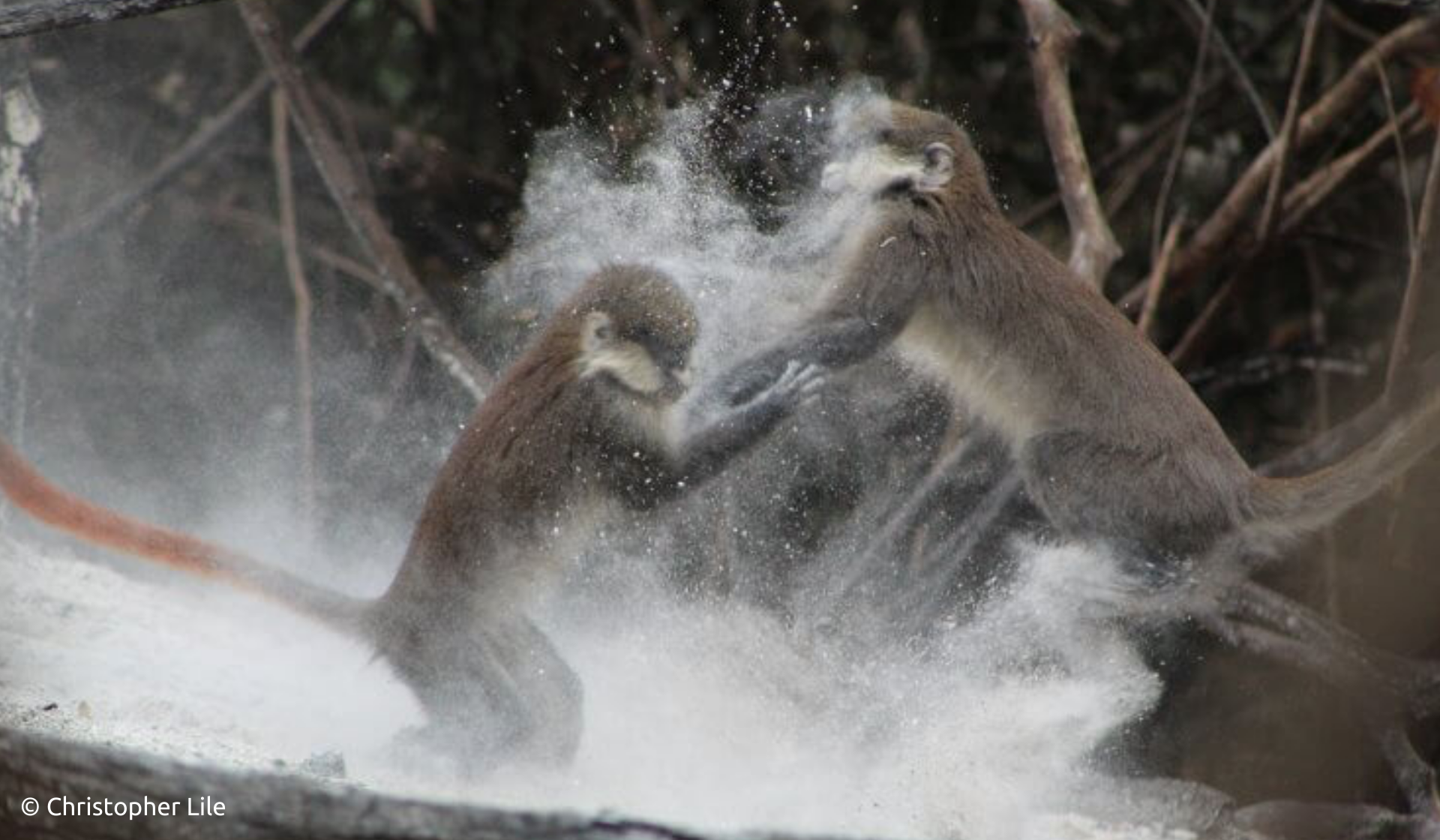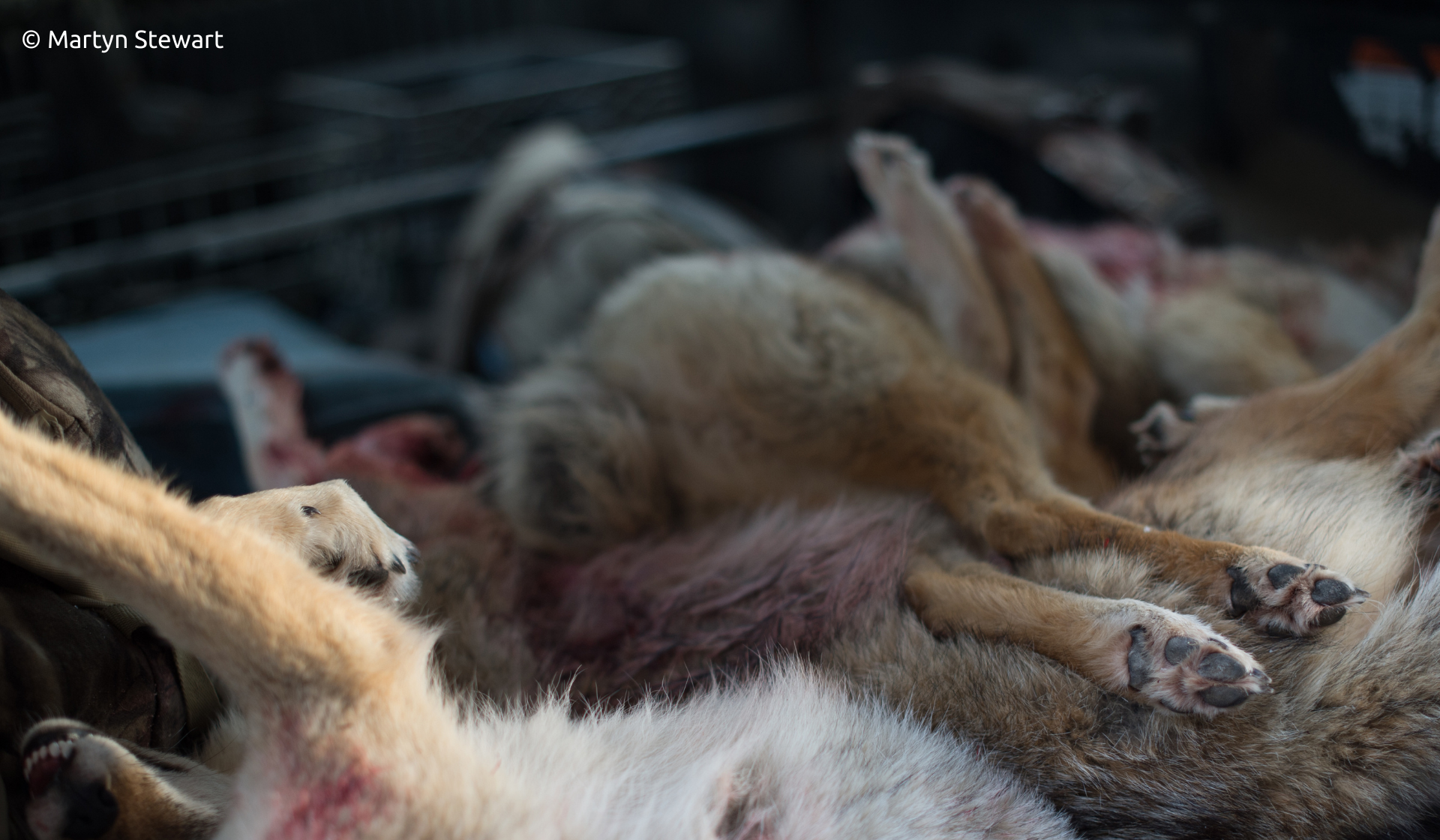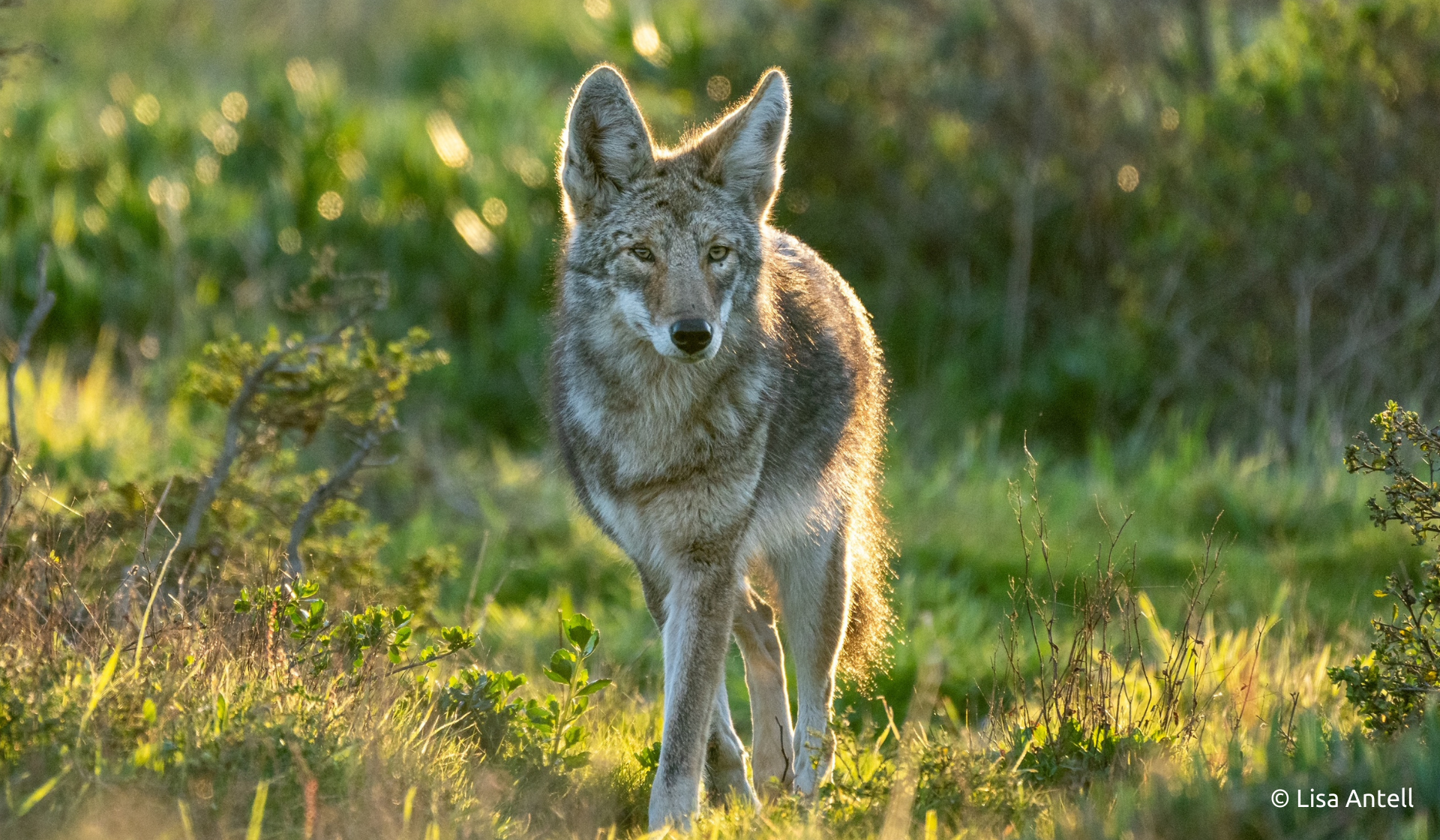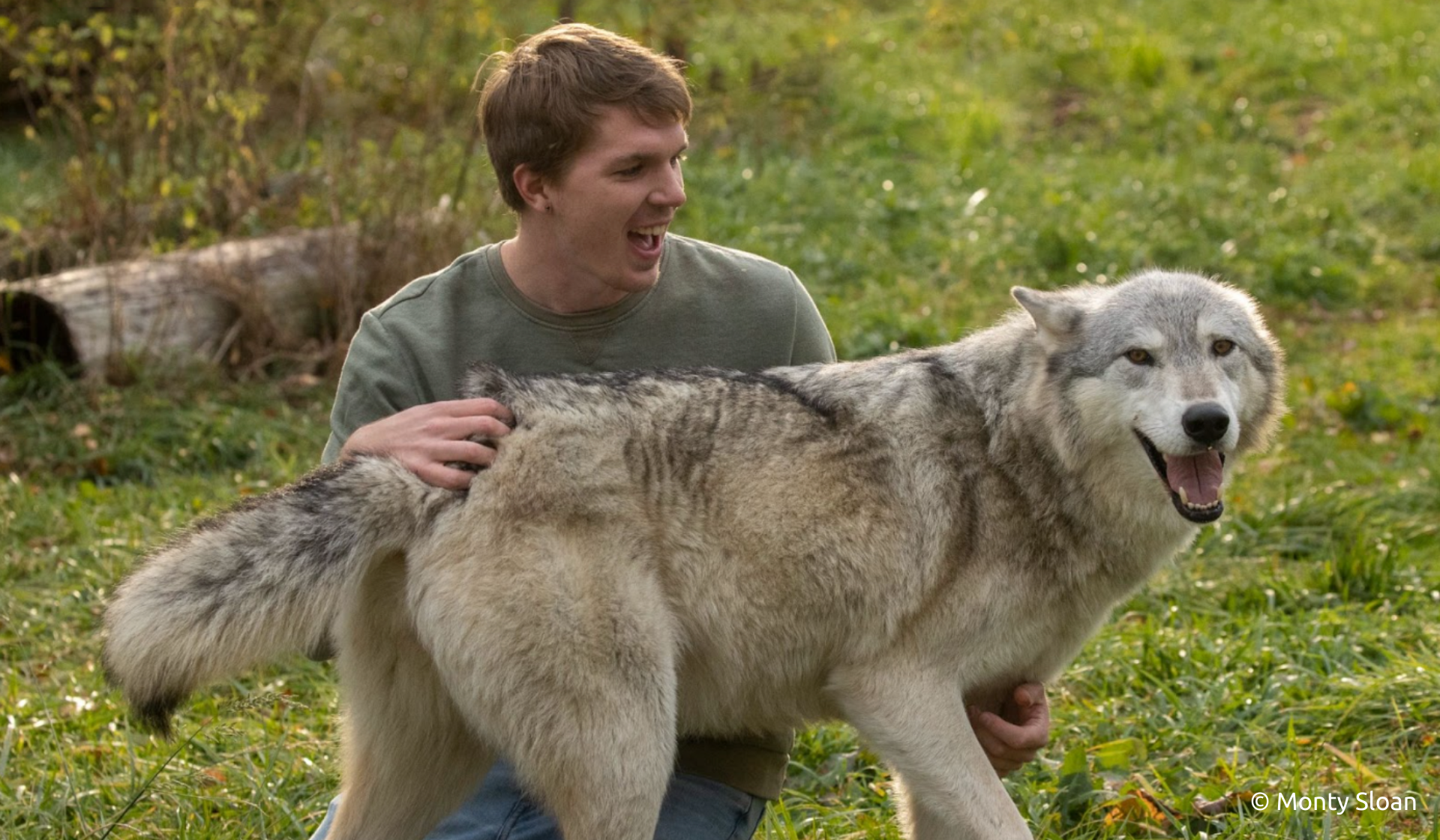Radicalizing Compassion for Coyotes to Create a Just Future for ALL Wildlife
By Christopher Lile, Project Coyote Operations & Communications Director
When I joined the Project Coyote team, several friends and acquaintances jokingly asked if I was “downgrading species”, because my previous job centered primarily on wolves. Changing focus from wolves to any other smaller canid would likely have garnered the same question, based on our culturally-biased tendency to show a higher level of concern and respect toward charismatic megafauna, especially those who are endangered.
The questions emanating from my career shift, though well intentioned and driven by curiosity, reminded me of the (less well intentioned) questions I received at eight years old, when I decided to stop eating meat—questions which, at their core, ranked certain animals as more disposable than others. The discomfort I experienced from the idea of eating animals evolved into horror and disbelief as I soon discovered the reality of factory farms, from the abject conditions of the animals to the ecological impacts.
Although I didn’t fully realize it at the time, going vegetarian in rural Appalachia in the early 2000s was a radical statement. It forced me to articulate and defend the compassion I felt toward nonhuman animals—whether domesticated farm animals or domesticated companion animals. And the shock of seeing the disturbing conditions of factory farms at such a young age conditioned me to consistently question the relationships between humans and nonhuman animals on our shared planet.
However, my younger self would never have guessed that the same disregard and dehumanization directed toward farm animals, culturally solidified in the “American lifestyle”, also extends to our wild neighbors.
Individuals: Lives Worth Fighting For
My innate fascination with non-human animals propelled me into my previous position as the Education Director at Wolf Park, a 100+ acre conservation center in Indiana where I cared for wolves, gray and red foxes, coyotes, and bison. These ambassador animals helped me connect thousands of visitors each year to the conservation stories of each species and the uniqueness of each individual animal in our care—cultivating compassion for an entire species through connections with individuals.
Working alongside wild, four-legged coworkers also taught me endless lessons in awareness, patience, and inter-species relationships. Without question, each wolf, coyote, fox, and bison embodied a deep sense of self; their personalities and relationships with each other, and with their human caregivers, were distinct and individualistic. These animals were the best possible mentors I could have had in this field, preparing me to dedicate the next stage of my career to protecting their wild counterparts, and all wild carnivores across the nation, ensuring their freedom to live and flourish as individuals.
Niko and Khewa, gray wolf siblings after a snowfall | photo by Christopher Lile
Viewing wild animals as individuals rather than as populations is, in a sense, radical. Advocate too hard for the rights of individual animals (beyond domesticated companion animals) and our society will deem you an extremist. It’s easier for most people, and most disciplines, to consider a species as the individual—with trends identified across populations and generalizations made about the species as a whole. However, when the individuals of a species are disregarded by humans for too long, and suddenly only a few hundred or few dozen, vulnerable and threatened individuals remain, it becomes impossible to NOT see animals as individuals. When each life carries invaluable genes, essential to the survival of their entire species, people tend to place increased emphasis on the individual. Proximity to extinction shouldn’t be our metric of the worthiness of individual life. But in the anthropocene, it often feels like we have no ethical choice but to focus our compassion and care solely upon species “on the brink”.
Galvanized to do my own part to prevent extinction years ago, I packed a tent, biodegradable shampoo, and boxes of Clif bars and landed in Madagascar to study one of our planet’s most critically endangered species: black and white ruffed lemurs. My yellow Rite in the Rain notebooks soon filled with primate behavioral data from Madagascar, and later the Duke Lemur Center in North Carolina and the Greater Mahale Ecosystem in Tanzania. Collectively, I spent over a year quietly watching as chimpanzees methodically fished in termite mounds, red tailed monkeys played in the ash of recent fires like children in their first snow, and lemurs groomed their matriarchs for hours in sun patches. Individuals within each social group became recognizable, both from physical characteristics and individual behavior.
Juvenile red-tailed monkeys wrestling in ash | photo by Christopher Lile
Although my focus later shifted from primates to wild carnivores, and from academia to nonprofits, the countless hours spent watching non-human primates affirmed my desire to protect individual animals’ rights to flourish, and solidified my intent to always consider the impact individual animals have within their social groups and wider community.
I feel greatly encouraged by new research produced in the last few years, such as Cassidy et al. which used “finer-scale measures” to examine historical wolf data from 5 national parks. Rather than relying on conventional population models, the authors considered wolves as individuals and focused on family units (packs) to determine that human-caused mortality triggers pack instability, especially if a pack leader is killed. Dr. Doug Smith, one of the world’s leading wolf experts who led Yellowstone’s wolf reintroduction program, noted this as “one of the most important papers to come out of Yellowstone in my 28 years with the park.”
Yet politicians and wildlife commissions frequently dismiss these important studies and ignore increasing public support for protecting wildlife for their intrinsic and ecological value. This is especially true for wild carnivores, as my colleague Dr. Fran Santiago-Ávila has extensively demonstrated within the state wolf management plans created by Wisconsin and Colorado, both of which omit large bodies of relevant scholarship. This dissonance in wildlife “management” illuminates the power structure and deeply rooted cultural bias dictating our country’s relationship with wildlife. Years of working in wolf education and advocacy exposed me to many of these problematic dynamics. But nothing could have quite prepared me for the transition to advocating for coyotes.
Coyotes: The Intersection of Conservation and Ethics
Without a doubt, coyotes are one of the most adaptable species on the planet. Faced with the same government-incentivized predator extermination campaigns that nearly wiped wolves, mountain lions, and bears off the map, coyote populations responded by tripling their range and filling the vacant ecological niches left where wolves were extirpated. They now provide critical ecological services in our rural and urban communities.
However, their resilience to adapt to a human dominated world has only perpetuated their relentless, unjust persecution. By conservative estimates, one coyote is killed every minute in the United States. Shockingly few legal protections exist for coyotes. They can be killed in unlimited numbers, every day of the year in most states, even during pup rearing season—a period of relief from hunting granted to almost every other “fur bearing mammal”. Hatred of coyotes, underscored by a love of killing, leads to wildlife killing contests (where coyotes are typically the primary target), inhumane trapping, and hounding. The U.S. Department of Agriculture’s Wildlife Services program even uses taxpayer dollars to kill over 55,000 coyotes each year.
More than one hundred years of failed coyote extermination programs, hundreds of thousands of wasted taxpayer dollars, and decades of scientific research have proven that killing coyotes does not “work”. It does not decrease their populations. It does not decrease human-wildlife conflict—in fact, indiscriminate killing can actually increase conflict. It does not create any positive environmental impacts. Killing does not solve any perceived or real conflicts with coyotes.
The resilience of coyotes in the face of intense persecution is remarkable. But it raises a question that many scientists and wildlife conservationists, not to mention policymakers, fail to adequately consider: what happens when individual lives are dismissed, and wildlife policy is based strictly on population numbers? When policy decisions are based solely on whether or not populations are in decline, as is typical of wildlife agencies across the U.S., then killing practices such as running over coyotes with snowmobiles (known as “coyote whacking”), killing nursing mothers, and cashing bodies in for belt buckles and other trophies, are entirely allowable. Coyote killing practices display the unethical repercussions of population-centered decision making. Just because coyotes are resilient in the face of unlimited killing should not grant wildlife managers and policymakers the latitude to allow egregious killing practices to occur and disregard the value of individual lives.
Aftermath of a wildlife of a wildlife killing contest | photo courtesy of Martyn Stewart
Although the majority of citizens don’t kill coyotes, a small but active group of people take advantage of the lack of basic protections for the species, calling them “pests” and killing them by the thousands. These individuals are unashamed to display the deep disconnect between humans and nonhuman animals enmeshed within their hunting “culture”. At Project Coyote, we see this disregard for life every day. We see dead coyotes used as political statements by celebrities. We see the unconscionable “smoke a pack a day” comments posted on our social media by coyote hunters who take pleasure and pride in killing wild canid families. We hear voicemails of coyote hunters mimicking the sounds of coyotes as hunting dogs sink in their teeth. We see photos in our inbox of dead coyotes with their unborn pups removed and laid atop their bodies. We see “how to” articles encouraging coyote hunters to call in coyotes by putting “emotion into your calling” to more convincingly imitate a distressed animal.
This is the reality of shaping wildlife policies and valuing life based solely on population size. Coyotes don’t need legal protections for their conservation as a species. They need legal protections because no life deserves the brutal harassment and violent deaths that they endure.
Unfortunately, many other lives—including companion animals and humans—can tragically meet the fates meant for coyotes due to loose coyote hunting regulations. Domesticated dogs are shot at bait piles meant for coyotes and even killed and skinned after being mistaken for coyotes. Countless species, including dogs and humans, have suffered from encounters with M-44 ‘Cyanide Bombs’ set for coyotes—most notably a young boy who watched his dog die and then experienced years of illness from a cyanide bomb set just feet away from his backyard by a Wildlife Services agent who, despite no incidences of farm animal predation in the area, wanted to “get a jump on the season”. Wolves, who are just beginning to recolonize the northeast, are easily shot by coyote hunters with zero repercussions for their mistake of identity.
Despite the threat coyote hunting poses to other lives, and the growing public desire for wildlife policy to be based on intrinsic and ecological value, changing wildlife policy to reflect public values is an arduous process. State wildlife commissions are often composed of appointed, rather than elected, members who represent agriculture and hunting interests. Those who oppose this system of governance and advocate for wildlife policy reform are often labeled as extremists and threatened. And because coyote populations aren’t faced with extinction, and are so unnecessarily politicized and polarized, few wildlife conservation organizations advocate for their protection.
Advocating for coyotes means acknowledging all individual lives matter. To protect the underdog in the face of fierce opposition is radical—but it shouldn’t be. I’m proud of my colleagues, our supporters, and our coalition partners for defending wild lives for their intrinsic value and questioning the culture and systems in place that allow individual animals to suffer simply because their populations are not threatened.
Hope For a Compassionate and Just Future
Coyotes represent hope for the adaptability of life on our rapidly changing planet, and they reveal the path forward to a more humane world. If our society can achieve compassionate coexistence with coyotes, our culture will have shifted toward a more compassionate, just, and sustainable framework for all who share our earth.
Coyote in golden hour | photo courtesy of Lisa Antell, #CaptureCoexistence Contributor
I’m immensely optimistic that we can collectively shift both our culture and our policies toward compassion for individual lives. There are a growing number of thought leaders in the wildlife advocacy field who are unafraid to blend ethics with science. And there is increasing public support for wildlife coexistence and increasing tolerance for sharing space with coyotes and other wildlife.
At Project Coyote, I feel hope every day. In conversation with our caring donors and supporters, I hear the shared values and the desire to make the world a better place. And in working with my talented and dedicated colleagues, I see the immense dedication to our mission. Collectively, we truly can make a difference. Just last week, we launched the first ever Coyote Awareness Week. This new holiday raises awareness about the intense persecution coyotes face and the importance of coexistence. And one year ago, we launched the #CaptureCoexistence Campaign, uniting wildlife photographers and videographers against wildlife killing contests. This community spends countless hours observing and appreciating individual wild lives and inspiring communities to value wildlife through their photographs, videos, and stories from the field. These campaigns can help shift hearts and minds about coyotes and bolster support for our campaigns to end inhumane trapping, trophy hunting, and killing contests (Oregon and New York banned killing contests last year, thanks to increasing support and public awareness about this bloodsport).
I hope you’ll join us in reshaping the world for coyotes, and all wildlife, through radical compassion.
Christopher with Khewa, a gray wolf education ambassador who chose him as a “comfort person” at just a few weeks old | photo courtesy of Monty Sloan
Christopher Lile is the Operations & Communications Director for Project Coyote where he works to increase the visibility and support for Project Coyote’s programs and advocacy efforts. With an interdisciplinary educational background of biology, psychology, and philanthropy, he’s committed his career to advocating for the underdogs and helping others effectively raise their voices for wild lives and wild spaces.
.

